Wellbeing garden ideas - easy ways to boost the mental health benefits of your outdoor space
Turn your garden into a wellbeing haven


You don't need to be an expert gardener – or a mental health expert – to appreciate the benefits of being outside in green space. Numerous studies prove gardens have a positive impact on our health and wellbeing, from the physical aspects of digging, planting and growing, to the mindfulness of experiencing the passing of the seasons, and wellbeing garden ideas are a great way to capitalise on this.
The scents, colours, sounds and textures of gardens influence our mood and physiology, which is why sensory gardens are becoming increasingly popular. And it's why we are so keen to soundproof our gardens, so we can create an oasis of calm and positivity in our own backyard.
Wellbeing garden ideas
'Spending time outside, whether that is in our gardens or in a green space, can have a host of benefits on our mental and physical wellbeing,' says Dr Emily Lambert, conservation scientist and co-founder of Seedball. 'Exposure to sunlight encourages the production of vitamin D, essential for mental wellbeing and overall health, while the fresh air helps to clear our minds, invigorate the body, and greatly improve our mood.
'The sensory experience of the outdoors has also been proven to boost our mental health,' Emily continues. 'Nature’s sights, sounds and smells all have calming and soothing effects, helping to reduce life’s stresses and anxieties while promoting mindfulness and connection to something greater than oneself.'
So, we know being in our garden and practising mindful gardening is good for us, but how can we make it even better? We talked to garden designers and wellbeing experts to discover the easy ideas that turn our plot into the ultimate wellbeing garden.
1. Grow a green wall
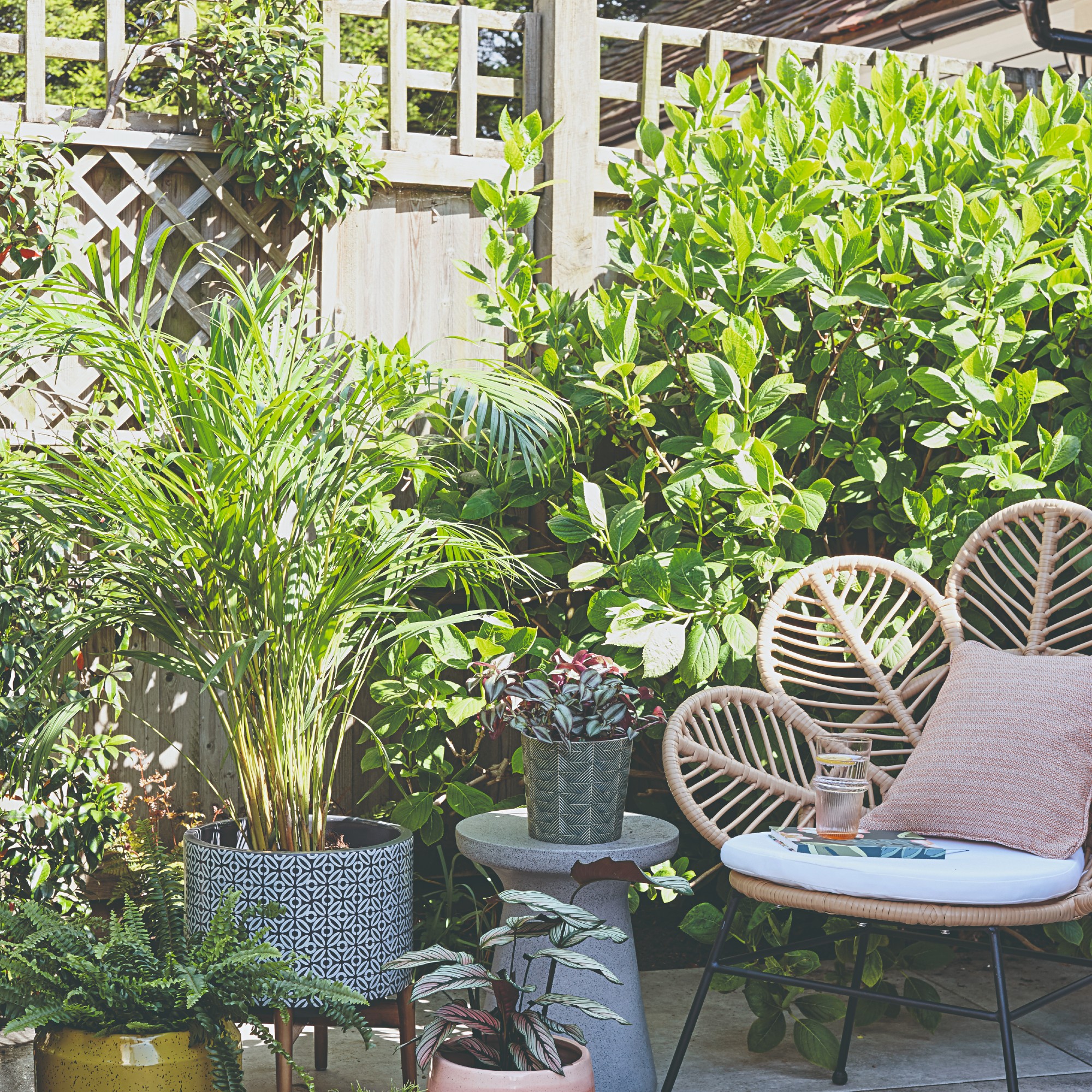
Creating a 'green wall' in your garden might mean training a climber to clamber over a fence, putting up a trellis covered in roses, or even hanging pots on a brick wall with a planter like the Jara Terracotta planter from Nkuku. Any of these methods will help create a vertical garden idea with the help of green ferns and trailing plants.
Whatever your green wall looks like, it won't just disguise an ugly boundary or make the most of vertical space in a small garden – it can promote feelings of calm and well-being, too.
Sign up to our newsletter for style inspiration, real homes, project and garden advice and shopping know-how
'There have been many studies looking at the science of what feels so good about being outdoors. It’s been documented that simply looking at greenery reduces our stress levels and promotes healing,' explains gardener and horticulturalist Camilla Phelps, who works with the gardening for health charity, Thrive.
'A green wall in the smallest of plots will add a wellbeing dimension to your outdoor space, whether it’s simply festooned with climbers or an intricate patchwork of vertical plants. It also creates a sense of security and protection, and its own microclimate.'
2. Promote resilience with a tree
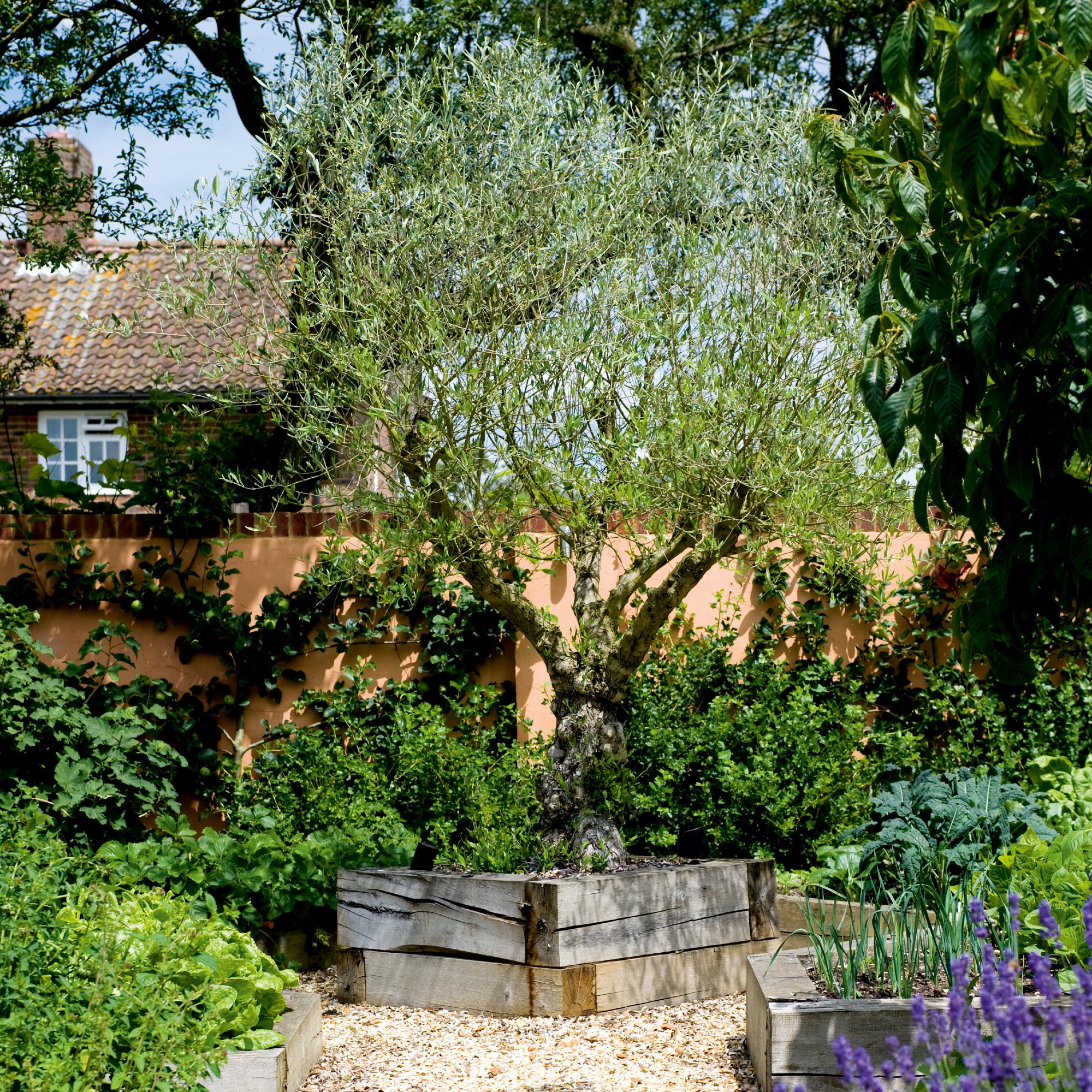
Picking the best tree for your garden will enhance the sustainability of your plot and improve its resilience against climate change. And fast-growing privacy trees can also block the prying eyes of neighbours.
But the strength and beauty of a tree can also be a living metaphor for our own resilience in tough times, says landscape designer and RHS Chelsea Flower Show award-winning garden designer, Robert Myers.
'We emphasise the significance of trees as resilient and essential elements within the garden's landscape. They play a crucial role in mitigating challenges such as heat and and are important in creating a more sustainable environment,' Robert says.
'Trees in the garden also foster a space for restoration, inspiration, and a shared appreciation for nature's resilience and beauty.'

Robert says his work is about creating places that bring people joy and meaning. He is a six-time RHS Chelsea Flower Show gold medallist and has won many other awards for his work, including the Society of Garden Designers’ Grand Award 2017 for the Magic Garden at Hampton Court Palace.
3. Soothe your senses
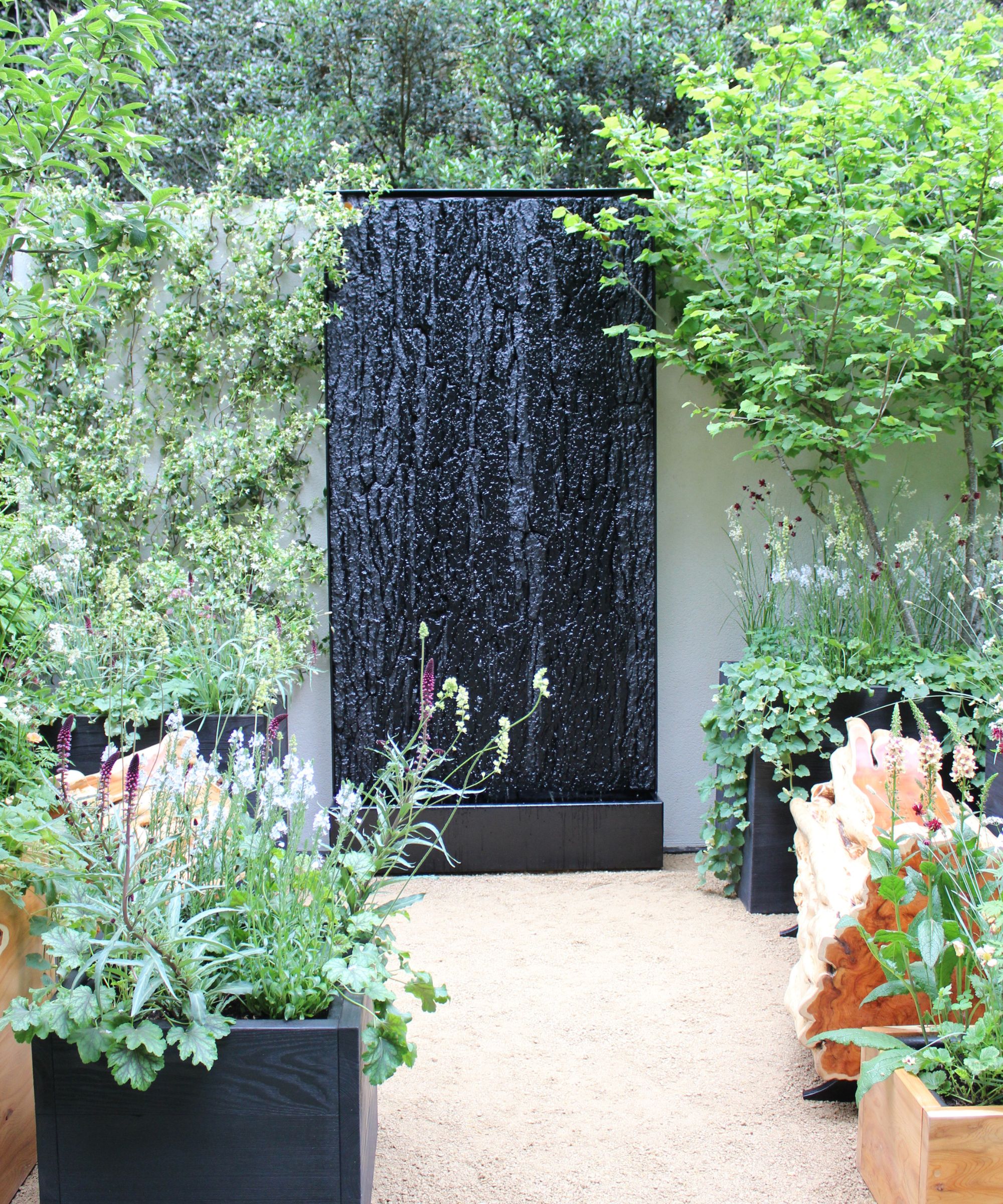
We tend to focus on what our garden looks like, but paying attention to how it smells, sounds, feels and even tastes can create a feelgood garden space that has a positive effect on our wellbeing.
You might include a simple water feature, fill pots or borders with scented plants, grow herbs and vegetables for their fragrance and taste, or add grasses for their movement and gentle rustling sounds.
'Incorporating different textures and sounds into your space can help turn your garden into both a visual and sensory experience,' says Diana Yates, author of Growing at Greenfields, all about her beautiful Scottish garden, and founder of The Reclaimed Garden Company.
'The sounds of water running, a gravelled path under foot, wind chimes or tall grasses stirred by the wind, can all help to relax the mind and soothe anxious feelings.'
4. Add roses for nostalgia

Nostalgiacore is the decorating trend credited with reducing our feelings of anxiety, but it's not just for indoors. Plants that bring back positive memories and feelings of comfort and ease are must-haves in a wellbeing garden. These can be any blooms that have good associations for you – but the flower most likely to prompt nostalgia is the rose.
'Roses are one of the most definitive elements in the quintessential English country garden, whether they’re delicately climbing up walls, vigorously rambling over fences, standing pretty in containers, or filling out ornamental flower beds,' says Ian Limmer, head of the nursery and plant breeding programme at Peter Beales Roses.
'The colour and variety is a matter of taste, but to get the full benefit of the fragrance you should bring them forward into areas where you’ll be sitting or regularly walking past. In general, the most fragrant roses are old-fashioned and historic roses, which you can plant along pathways to help trigger the senses as you walk through a garden, trained across pergolas or around sheltered seating for a beautiful, seated bower.'
5. Don't be afraid to get your hands dirty

When it comes to creating a wellbeing garden, we shouldn't be afraid to get our hands dirty – literally.
As well as the mindfulness benefits of experiencing soil running through our fingers, or watching the worms and other creepy crawlies going about life in the earth, there's a scientific reason to get stuck in the mud.
'If you’re lucky enough to be able to get your hands in the soil, you might find planting simply makes you feel happier – friendly bacteria in soil have been shown to boost your immune system and stimulate the feelgood hormone serotonin,' says Camilla Phelps.
6. Move and boost endorphins
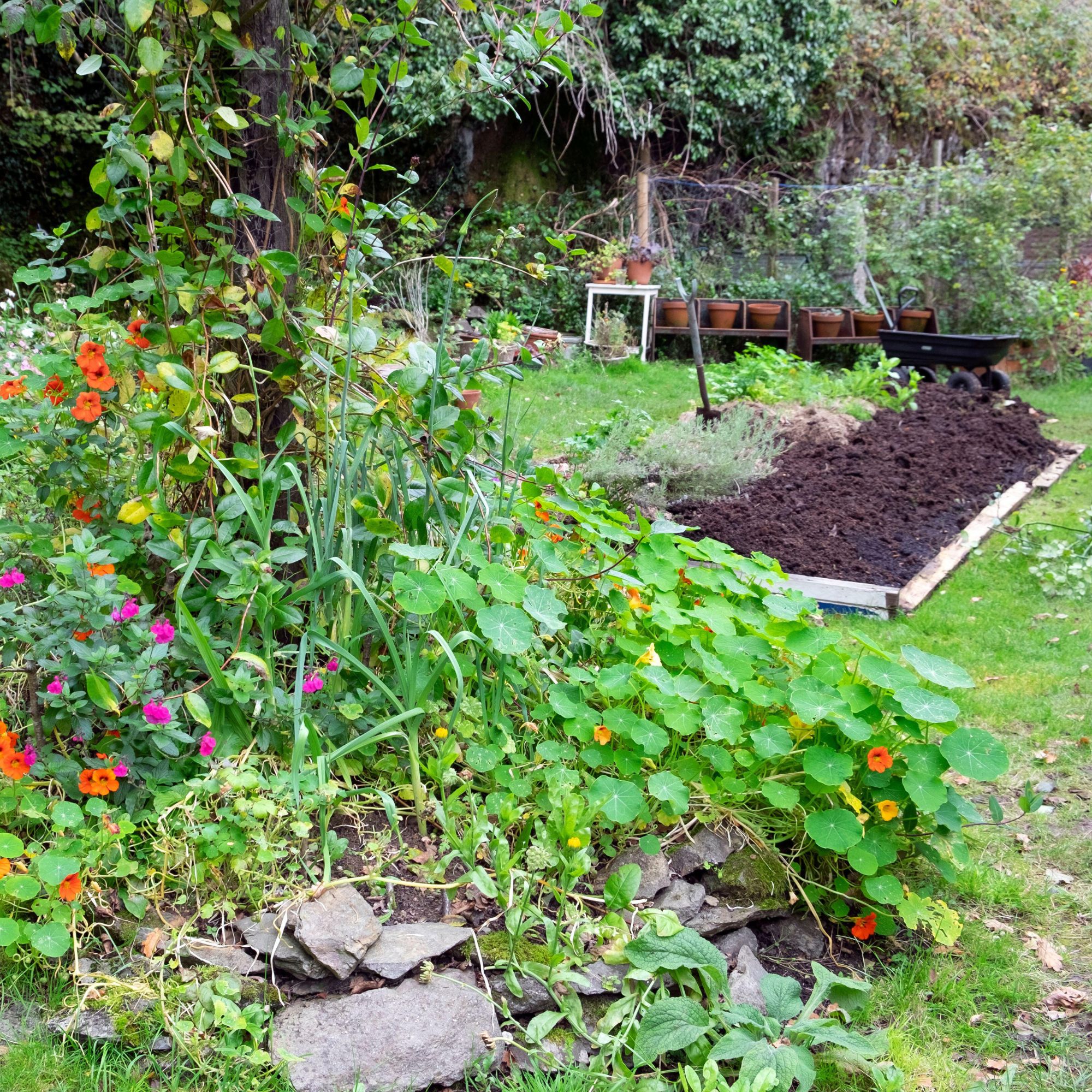
Heard of a runner's high? You can get the same feelgood boost simply by being active in your garden.
'Moving around outdoors releases endorphins, which in turn creates positive feelings and can keep you active. Being outdoors provides a break from the stresses of daily life and helps us take a minute to ourselves and appreciate the world around us,' says Seedball's Dr Emily Lambert.
Thrive, the gardening for health charity, describes the physical activity involved in gardening as a 'portal to mental health and wellbeing'. Studies have suggested that we burn as many calories in 45 minutes of gardening as we do in 30 minutes of aerobics.

Emily is a conservation scientist and co-founder of Seedball, an award-winning, not-for-profit organisation that aims to increase the abundance of wildflowers and wildlife in our gardens and landscapes.
7. Embrace dopamine planting
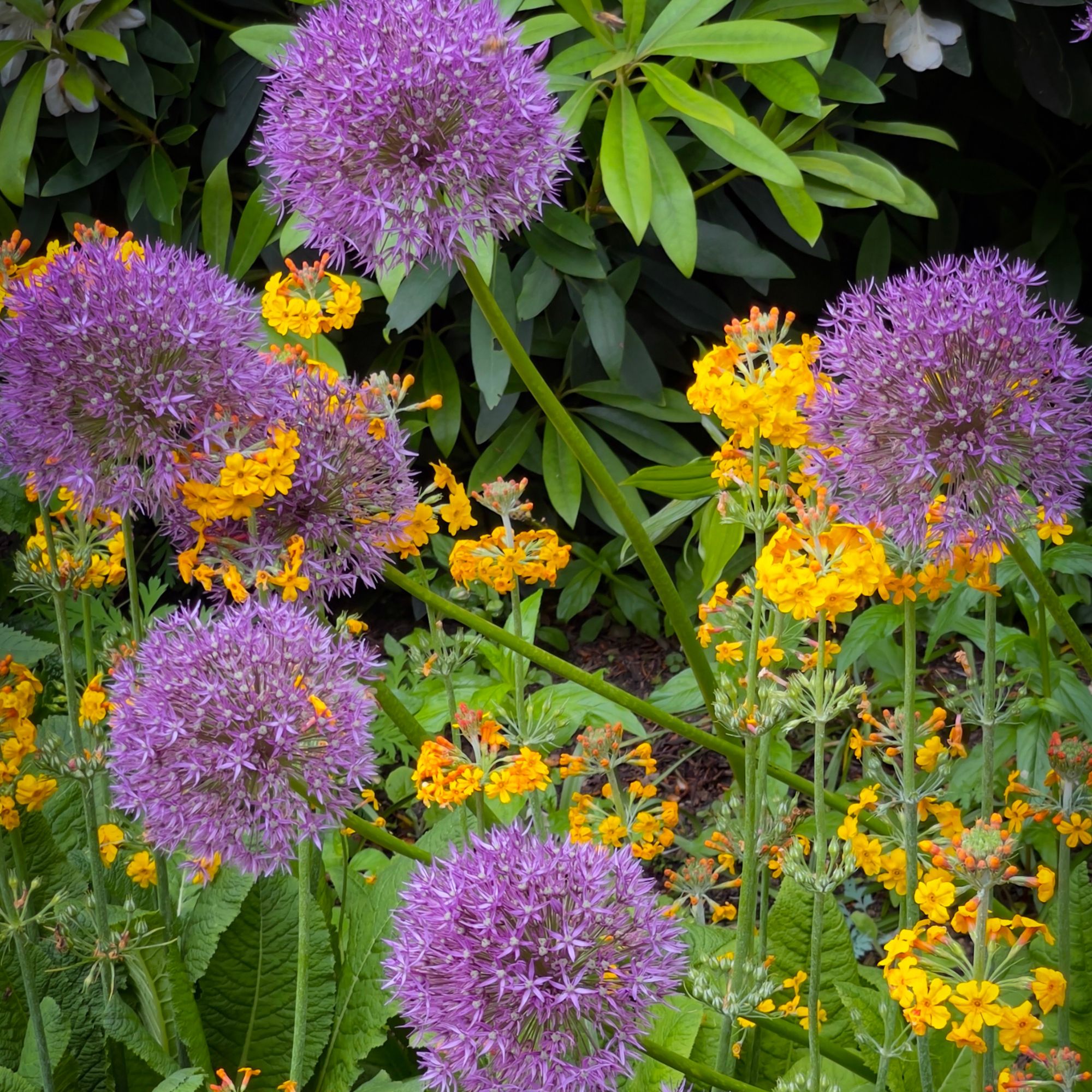
If you've already embraced happy colours and dopamine decor for your home, why not take a look on the bright side in your garden, too?
'Colourful and fragrant flowers are important for enhancing feelings of wellbeing when we’re outdoors – our brains are immediately rewarded by bright colours and scents, which add to the dopamine effect of being in the garden,' explains wellbeing gardener, Camilla Phelps.
As well as opting for bright planting, when creating a fragrant garden don't overlook the classic easy-to-grow and divinely scented plants. 'Lavender, geraniums and roses all stimulate feelings of calm,' she says.
8. Express your wild side

Wildflowers are nature's tough cookies – resilient, hardy blooms that can thrive in the most challenging of conditions. They also connect us to the landscapes outside our homes, broadening our horizons. And they help birds, pollinators and other creatures to thrive, bringing wellbeing benefits that extend beyond ourselves.
The best part is you don't need to be an expert gardener to make this wellbeing garden idea work. All you need is some wildflower seeds, like these from SeedBall on Amazon or even consider investing in meadow turf that is also available on Amazon.
'The vibrant colours and unique shapes and sizes of wildflowers create a visually beautiful landscape; this can help lift our moods and foster appreciation for nature,' explains Dr Emily Lambert.
'Surrounding yourself with wildflowers encourages a connection to the natural world, which is known to reduce stress, anxiety and improve mental wellbeing. Observing the wildlife that visits and benefits from the wildflower nectar can also help bring calm, mindfulness, and relaxation as we remain present in that moment.
'But ultimately, knowing you’re contributing to biodiversity, helping pollinators and wildlife thrive while creating a gorgeous sea of flowers can bring a sense of purpose and appreciation of your surroundings – all which positively benefits mental wellbeing!'
9. Get a taste of the good life

Growing your own food is another mindful and rewarding experience, so it's worth considering adding a raised vegetable bed, or planting a few attractive edimentals, so you can harvest the feelgood vibes.
'Herbs and berries are simple choices to begin with, but knowing you’ve grown them and put in the hard work will make them taste even better,' says Dr Emily Latimer.
'You could grow edible flowers, too. Clover, mallow, daisy and even dandelions can all make adventurous additions to salads, sandwiches, and other delicious meals.'
Primrose has a lovely range of grow-your-own sets, from growing your own cocktail garnishes, pizza toppings or spices to get you started.
10. Cultivate mindfulness
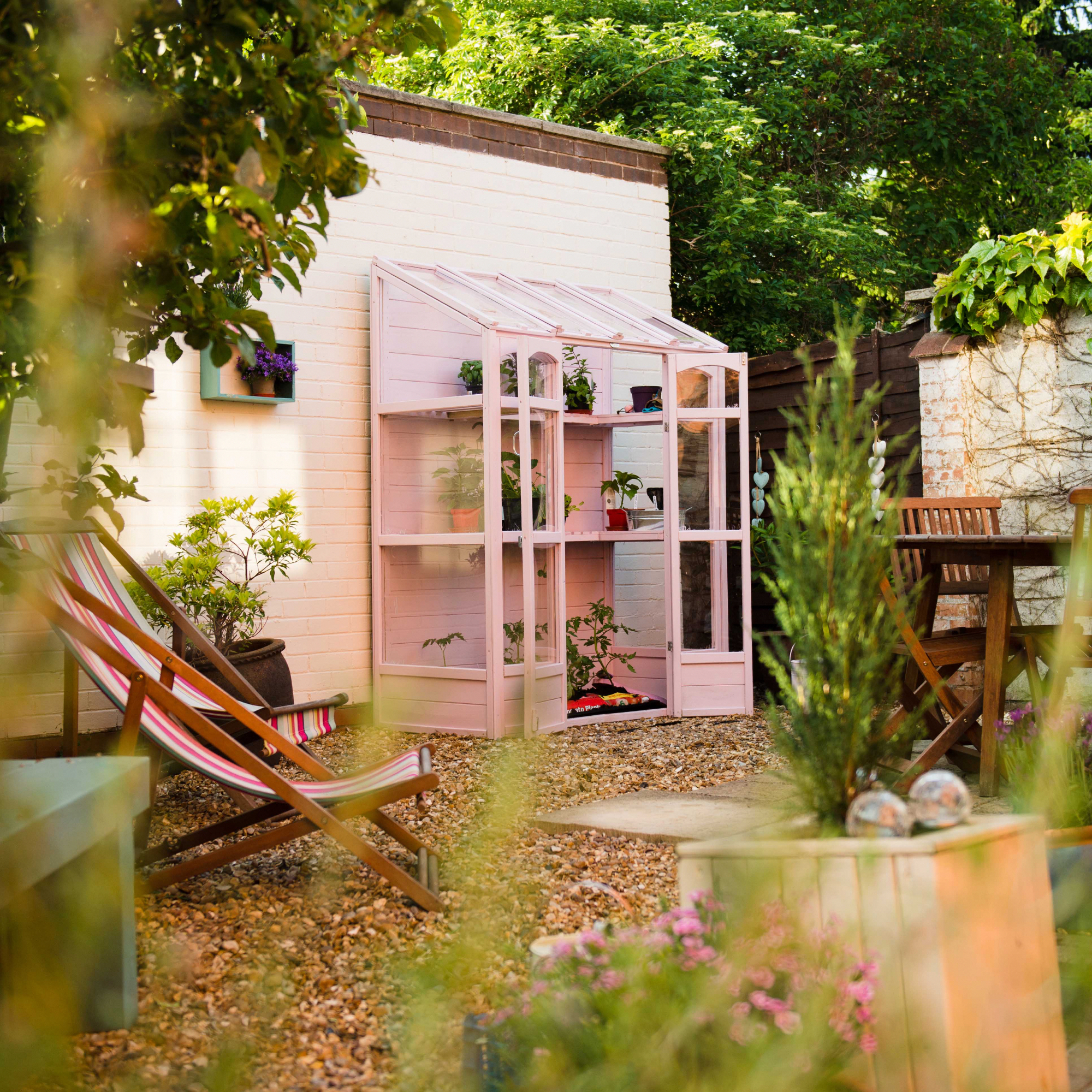
There’s a time and a place for vigorous, calorie-burning activities in the garden, but certain tasks can be slowed down and carried out meditatively.
'Sowing seeds, pruning and planting have an in-built mindfulness. It’s about being absorbed in the task at hand and letting go of thoughts about the day-to-day,' explains Camilla Phelps.
Try it while sowing seeds.
'Mix sand and compost with bare hands, and feel the texture morph into the perfect, seed-sowing material for seedlings to establish good roots,' she says.
'Fill pots to the rim, tapping them down gently and notice the size and shape of the seed, large or small, pointed or round, as you scatter them on the top of the soil or push them lightly into the compost.
'Water in gently, watch and wait. Nasturtiums, sunflowers, peas and beans will reward you with fast germination. Watching them emerge is magic and taps into a fundamental, childlike wonder that is such an important key to unlocking those moments of pure wellbeing.'
Ultimately, our gardens are about more than display; they are holistic spaces that can enhance our wellbeing in numerous ways.
'In a world where the pace is often frenetic, the garden stands as a refuge,' says Robert Myers. 'It's a reminder of the restorative power of nature, inspiring all who enter to find solace, rejuvenation and joy in the beauty of the natural world.

Andrea began her journalism career at Ideal Home and is currently Editor of our sister title, Country Homes & Interiors, which celebrates modern country style. Andrea is passionate about colour and how it can transform both our homes and our sense of wellbeing, and has completed The Power of Colour course with the prestigious KLC School of Design. Andrea's career spans interiors magazines, women's lifestyle titles and newspapers. After her first job at Ideal Home, she moved on to women's magazines, Options and Frank. From there it was on to the launch of Red magazine, where she stayed for 10 years and became Assistant Editor. She then shifted into freelancing, and spent 14 years writing for everyone from The Telegraph to The Sunday Times, Livingetc, Stylist and Woman & Home. She was then offered the job as Editor of Country Homes & Interiors, and now combines that role with writing for idealhome.co.uk.